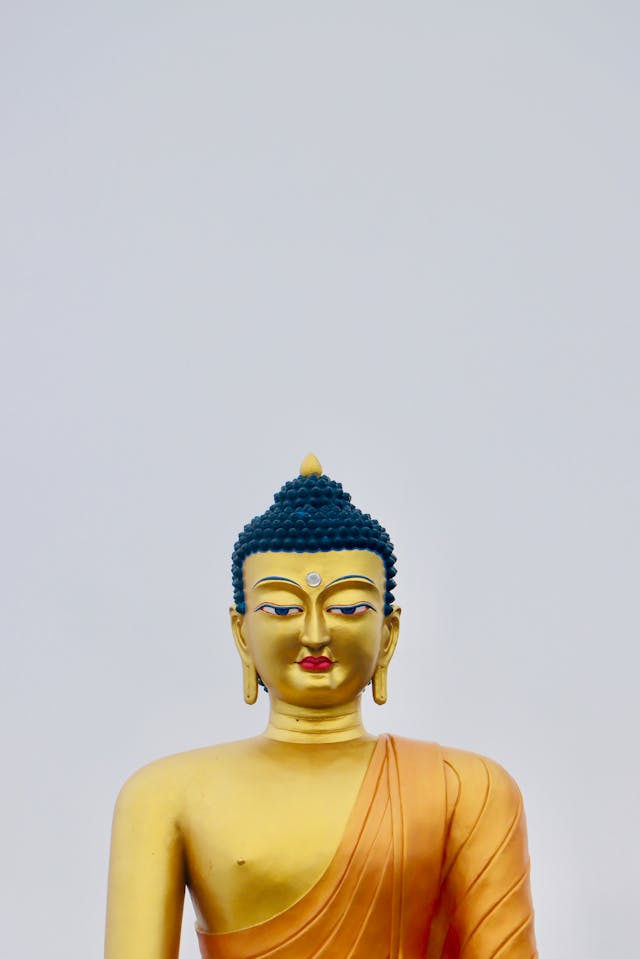Ahimsa, often translated as non-violence, is a concept that many associate with Mahatma Gandhi. His advocacy for non-violent resistance, or Satyagraha, shaped the freedom movement of India and influenced civil rights movements worldwide. However, the idea of Ahimsa goes far beyond Gandhi’s interpretation. Its roots are found in ancient Indian texts, where it holds a much deeper and multifaceted significance.
The Concept of Ahimsa in Ancient Texts
Ahimsa is derived from the Sanskrit word “Himsa,” which means violence or harm. The prefix “A-” negates the meaning, translating to non-violence or non-harm. Yet, the definition is not limited to the physical aspect of violence. Ancient texts define Ahimsa in a more expansive sense, relating to thoughts, words, and actions, and extending to all living beings, including animals and plants.
In the Hindu Dharma, Ahimsa is one of the fundamental principles of righteousness and is linked to the moral laws of Karma. The idea that causing harm to others, whether physically or emotionally, invites negative karmic consequences is central to this belief system.
Ahimsa in the Vedas
The Vedas, the oldest sacred scriptures of Hinduism, provide the earliest references to Ahimsa. Although the term is not as explicitly defined as in later texts, the spirit of Ahimsa can be inferred from the emphasis on compassion (Daya) and restraint (Dama). The concept of universal respect for all living creatures is deeply embedded in Vedic rituals and hymns. The Yajurveda states:
“May all beings see you with a friendly eye, may I look upon all beings with friendliness.”
(Yajurveda 36.18)
This verse highlights the Vedic foundation of seeing the world through a lens of non-harm and goodwill, which aligns with the broader meaning of Ahimsa.
Ahimsa in the Upanishads
The Upanishads, which delve into the philosophical aspects of Vedic teachings, provide a more detailed exploration of Ahimsa. They consider it not just a practice, but a way of being, tied to one’s spiritual development.
The Brihadaranyaka Upanishad presents Ahimsa as essential to attaining Moksha (liberation). It teaches that the divine self is present in all beings, and therefore, causing harm to any living creature is akin to harming oneself.
“He who sees all beings in his own self, and his own self in all beings, feels no hatred by virtue of that realization.”
(Brihadaranyaka Upanishad 1.4.14)
This reinforces the idea that Ahimsa is not merely the absence of violence but an active recognition of the interconnectedness of all life.
Ahimsa in the Mahabharata
In the epic Mahabharata, Ahimsa is elevated to a universal virtue. Lord Krishna, during his discourse in the Bhagavad Gita, advises Arjuna to perform his duty as a warrior, even if it involves violence, yet maintains that Ahimsa in intent and heart is paramount. This is one of the key areas where Gandhi’s interpretation diverged from the ancient texts.
In the Anushasana Parva (Book of Instructions), Bhishma tells Yudhishthira:
“Ahimsa is the highest duty, Ahimsa is the highest self-control, Ahimsa is the greatest gift, Ahimsa is the best practice, Ahimsa is the highest sacrifice.”
(Mahabharata 13.117)
However, the Mahabharata also acknowledges that violence may be justified in certain circumstances, particularly when it is performed in line with one’s dharma (duty). This indicates that Ahimsa in the ancient sense did not always advocate complete abstinence from violence but rather advocated for the ethical discernment in action.
Ahimsa in Jainism
Jainism places Ahimsa at the very core of its teachings, elevating it to the highest moral value. The Jain interpretation of Ahimsa is the most rigorous, emphasizing non-harm in thought, word, and deed. For Jains, Ahimsa extends to the smallest forms of life, including insects and microorganisms, and the practice of strict vegetarianism or veganism is an essential part of this principle.
In Jain texts like the Acaranga Sutra, Ahimsa is described as a way of living that minimizes harm to all living beings, including the earth, air, and water:
“All beings desire to live. Nobody wishes to die. Therefore, one should neither kill nor cause others to kill.”
(Acaranga Sutra 1.2.3)
This rigorous adherence to Ahimsa is practiced by Jain monks and nuns, who take extraordinary measures to avoid harming any living creatures, even unintentionally.

Ahimsa in Buddhism
In Buddhism, Ahimsa is closely associated with the first precept of Pañcaśīla (Five Precepts), which encourages abstaining from killing or causing harm to any living being. The principle is not only moral but also spiritual, as harming others is seen as generating negative karma and obstructing the path to enlightenment.
The Buddha’s teachings emphasize compassion and loving-kindness (Metta) as fundamental to Ahimsa. The Dhammapada, a collection of sayings of the Buddha, includes:
“All tremble at violence; all fear death. Comparing others with oneself, one should neither kill nor cause others to kill.”
(Dhammapada 129)
Buddhism, while not as strict as Jainism in terms of vegetarianism, still emphasizes that intentional harm to sentient beings must be avoided, reinforcing the universal application of Ahimsa.
Gandhi’s Interpretation of Ahimsa
Mahatma Gandhi’s interpretation of Ahimsa was revolutionary in its application to political and social movements. Gandhi viewed Ahimsa not just as the absence of physical violence but as a philosophy of non-violent resistance, which he termed Satyagraha. He believed in opposing injustice and oppression through peaceful means, rooted in love and compassion rather than hatred or revenge.
While Gandhi’s interpretation was powerful and transformative, it was somewhat a simplification of the broader and deeper meanings found in ancient texts. Gandhi’s Ahimsa focused more on social and political non-violence, which was instrumental in India’s struggle for independence, but the spiritual, moral, and karmic implications of Ahimsa as described in the ancient scriptures were less emphasized in his teachings.
Ahimsa in Modern Times
The ancient and multifaceted concept of Ahimsa holds great relevance in today’s world, where violence—both physical and emotional—is rampant. Practicing Ahimsa as a way of life means embracing compassion, empathy, and respect for all beings. This includes non-violence in speech and thought, where modern issues such as bullying, hate speech, and discrimination become forms of harm.
In addition, environmental consciousness can be seen as a modern application of Ahimsa, where harm to the natural world is reduced by adopting sustainable living practices.
The true essence of Ahimsa, as described in ancient texts, goes far beyond the simplified version often attributed to Gandhi. While Gandhi’s interpretation played a crucial role in shaping modern history, the ancient scriptures present Ahimsa as a comprehensive principle that encompasses not only non-violence but also compassion, respect, and interconnectedness with all life.
Understanding the broader context of Ahimsa allows us to appreciate its deep spiritual significance and its potential to inspire a more peaceful, harmonious world—both in personal practice and collective action.



